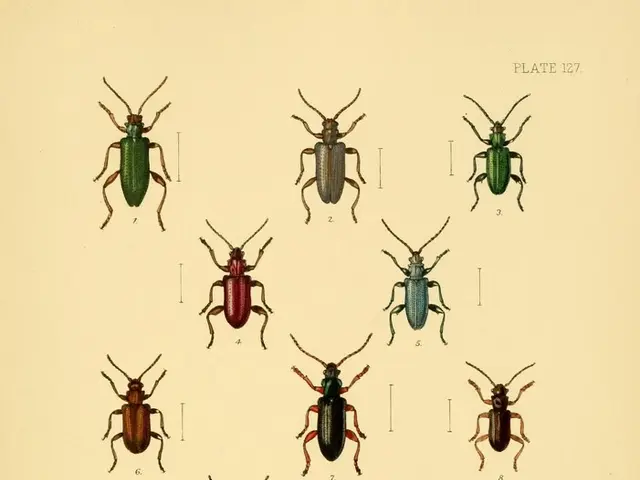Secrets hidden in Leonardo da Vinci's writings.
Leonardo da Vinci: The Renaissance Polymath
Leonardo da Vinci, a renowned figure of the Italian Renaissance, was not just a master painter but also a prolific inventor, mathematician, and scientist. Born during the late 15th century, he made significant contributions to various fields, from art and architecture to natural history and anatomy.
In the early 1490s, da Vinci ventured into the Italian Alps to study and draw plants, animals, and birds, making detailed observations of natural forms that contributed to early natural history and anatomical studies. His sketches of thunderstorms and geological formations were particularly accurate, showcasing his keen eye for detail.
One of da Vinci's most famous works, "Vitruvius Man" (ca 1487), is a pen-and-ink drawing depicting a male figure in two superimposed positions with extended arms and legs within a circle and a square. This drawing explores the geometry of perfect proportions, reflecting da Vinci's belief that the workings of the human body are analogous to the workings of the universe.
Da Vinci's studies of natural history included examining fossils and land formations, and he made some of the first modern scientific speculations about geology. His drawings of cliffs show clearly the strata from different geological epochs, demonstrating his understanding of the earth's history.
In the field of anatomy, da Vinci made significant contributions, including discoveries about atherosclerosis and arterial obstruction, hundreds of years before they were recognized by physicians. His anatomical drawings showed features from multiple angles, in cross section and in multiple cutaway views that revealed the levels of structure.
Da Vinci was also a mathematician who was obsessed with geometry, particularly in the proportions of the human body. He was familiar with the golden mean, a mathematical ratio associated with aesthetically pleasing compositions. His notebooks on optics are meticulous and incorporate his knowledge of geometry, similar to modern lab books.
Leonardo da Vinci's work on flying machines, long before the concept of a practical flying machine became reality, included over 35,000 words and 500 sketches. His designs for the parachute, mirror-grinding machine, scissors, portable bridges, the mitre lock, the spring drive, and possibly the first robot, demonstrate his innovative mind.
In addition to his artistic masterpieces like the "Mona Lisa" and "The Last Supper," da Vinci made significant contributions in various fields beyond art. He designed the teatro da predicare, a lecture hall in the shape of an amphitheater, to enable the preacher's voice to reach the most distant corner of the building.
In 1502, da Vinci submitted a plan for a bridge to Ottoman ruler Sultan Bayezid II, which was later proven to be technically feasible by modern architects in 2001 when they used his design to construct a bridge over a highway in Norway. Da Vinci was officially appointed premier architect to King Francis I of France in 1515.
Despite creating only 22 paintings on display worldwide and a few hundred other personal drawings, da Vinci's influence on art, science, and technology is undeniable. His legacy continues to inspire and captivate scholars and enthusiasts alike, making him one of the most celebrated figures in history.
Read also:
- Understanding Hemorrhagic Gastroenteritis: Key Facts
- Stopping Osteoporosis Treatment: Timeline Considerations
- Tobacco industry's suggested changes on a legislative modification are disregarded by health journalists
- Expanded Community Health Involvement by CK Birla Hospitals, Jaipur, Maintained Through Consistent Outreach Programs Across Rajasthan








